The Digital Construction Awards attracted 165 entries this year, 84 of which have been shortlisted. Here, we detail the shortlisted entries for Digital Innovation in Health, Safety and Wellbeing.
Digital Innovation in Health, Safety and Wellbeing recognises the use of digitalisation, digital methodologies or technologies to enhance health, safety and wellbeing among workers on construction projects. Six entrants – including the Health and Safety Executive, AtkinsRéalis and Graham – made the shortlist.
Geospatial Commission/AtkinsRéalis | The National Underground Asset Register
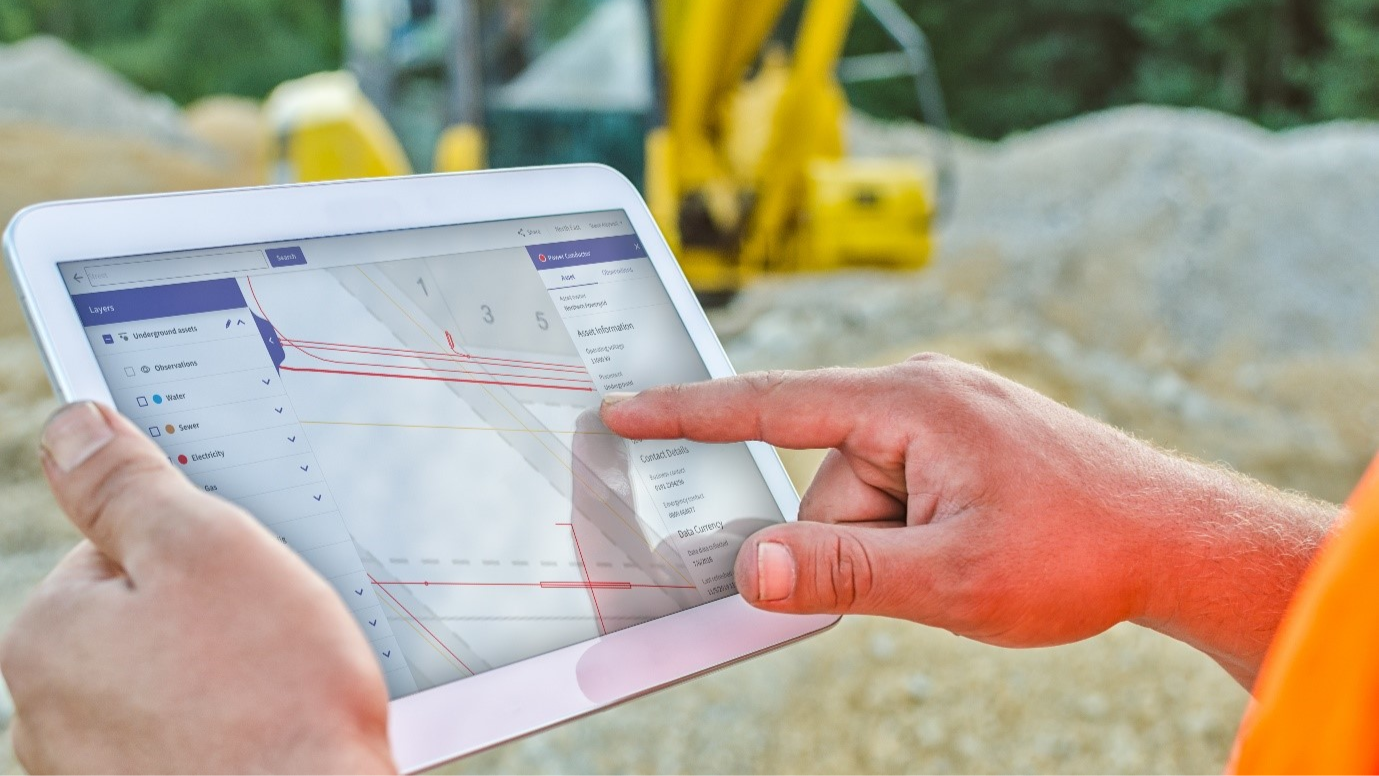
The Geospatial Commission and AtkinsRéalis are building the National Underground Asset Register (NUAR) – an interactive digital map of underground pipes and cables that will improve safe digging and end accidental strikes.
There are an estimated four million kilometres of underground pipes and cables across the UK, and a hole is dug every seven seconds to install, fix and maintain them. Each of the more than 700 owners of these assets is legally required to share data for ‘safe digging’. However, there is currently no standardised method to do this, with multiple organisations having to be contacted for each dig, providing information in varied formats and on different timelines.
This results in an estimated 60,000 accidental strikes on these pipes and cables every year, putting workers’ safety and lives at risk, in addition to community disruption which costs the UK economy £2.4bn annually.
NUAR gives planners and excavators standardised, secure, instant access to the data they need, when they need it, to carry out work effectively and safely and reducing the time it takes to get location data from 6.1 days to 60 seconds.
An initial version of NUAR is now available across England, Wales and Northern Ireland. It already includes data from major energy, water and telecommunication companies, transport organisations and local authorities.
NUAR is expected to be fully operational by the end of 2025, when it is estimated it will deliver £490m of economic growth annually through reduced accidental damage, increased efficiency and reduced community disruption.
Fit For Work

Mace approached safety and wellbeing software developer Fit For Work to provide a solution that would support both the physical and mental health of its workforce and would address construction’s specific health and safety challenges.
Due to the contractor’s size and the number of projects in its portfolio, the solution needed to be scalable and consistent. In addition, Mace had some specific goals to achieve, including the provision of wellbeing support to everyone onsite, as well as subcontractors.
Fit For Work claims there is no other app currently in the market which combines traditional health and safety compliance features with mental health and wellbeing resources and which can be scaled to meet the demands of big workforces such as Mace’s.
The app allows for anonymity when reporting near misses or other safety knowledge, reducing the risk of being victimised. This feature also contributes towards the mitigation of modern slavery. A workforce messaging tool enables communication between shifts and the connection of the whole project team.
Built in a modular way, the system has been integrated with Datascope, a gated entry system on Mace’s sites. This ensures that the right information reaches the right people in real-time and makes it easier to incorporate every worker on site, including the supply chain.
The app uses coded, encrypted facial recognition, geolocation and cloud technology to ensure the right person is in the right place at the right time with the right competencies and qualifications while being GDPR-compliant.
Graham | CORA: Enhancing health, safety and environmental reporting and analytics
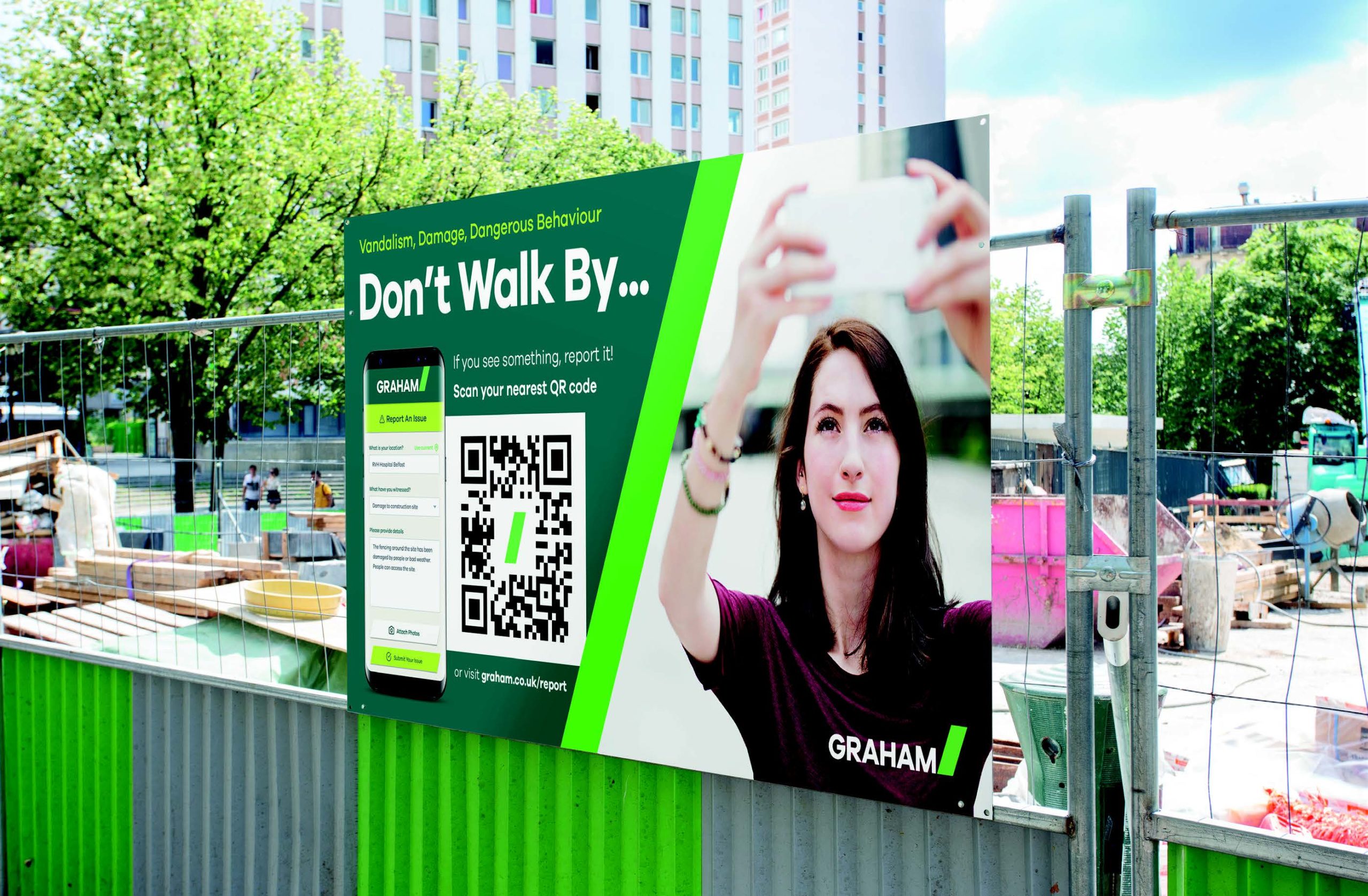
Graham designed in-house a safety, health and environment (SHE) portal that allows for timeous reporting and analysis of all types of incidents, observations and disciplines across the contractor’s integrated SHE management systems.
The CORA (consequence, observation, reporting and analysis) portal allows due diligence and compliance auditing across divisional, sector, regional and date filtrations. Additionally, it can record Graham’s energy, fuel, waste and water usage to monitor and manage the contractor’s journey to net zero.
Graham maintains ISO 45001 and 18001 certifications for the assurance of its internal and external stakeholders – all of which have been enhanced through CORA’s capabilities. Graham has proved this to be a system that can be separated from off-the-shelf systems by encompassing all strands of SHE and is trend-focused through enhanced monitoring modules to allow continual improvement.
CORA’s cloud-based portal is provided as a wrapper and sees all SHE information securely backed up from any smart device for those with a registered account. Information is uploaded in real-time, creating automatic escalations through instantaneous notifications via email, and customised workflows/permissions are assigned by Graham’s CORA admin to staff during user registration stages.
Reported accidents, observations, inspections and assigned actions are addressed to specific lines of authority and those responsible for managing works, placing full accountability and ownership on the right people.
Graham says the system has resulted in a noticeable reduction in physical paperwork, time efficiencies, and improvements in the quality of information and analytics provided.
HSE | Industrial Safetytech Regulatory Sandbox
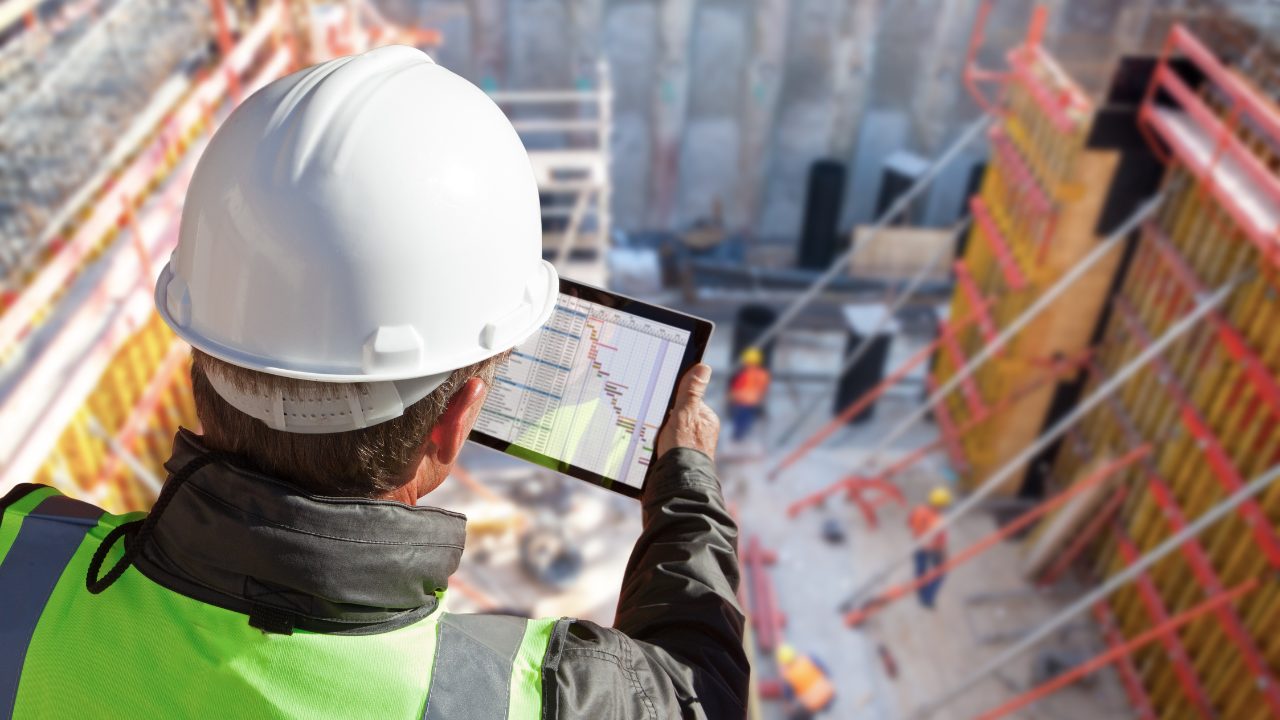
The Health and Safety Executive (HSE) partnered with Safetytech Accelerator (STA) – a non-profit organisation established by Lloyd’s Register and the Lloyd’s Register Foundation – to develop the first Industrial Safetytech Regulatory Sandbox (ISRS).
The ISRS focuses on the acceleration of construction’s adoption of safetytech products that use technologies such as AI, wearables and robotics. It addresses important questions regarding the safety implications of emerging technologies, emphasising the need for a collaborative approach between tech innovators, industry stakeholders and regulators to address the barriers to widespread adoption.
The ISRS draws inspiration from established regulatory sandboxes, particularly in fintech, and has evolved to meet the specific demands of the construction industry. The sandbox combines HSE’s regulatory proficiency and the construction industry networks with STA’s innovation programme expertise.
The scope of the sandbox centres around risk areas like falls from height, vehicle collisions, crane operations, and manual handling. It also focuses on three key objectives:
- improving assessment and compliance activities;
- accelerating the adoption of proven safetytech products; and
- understanding and overcoming barriers to developing life-saving technologies.
Six investigative studies were conducted, each led by an innovative tech company and supported by mentors from both HSE and the industry. The emphasis was on fostering teamwork to develop solutions collaboratively and avoid siloed development.
The ISRS project resulted in the development of six technologies by six different tech companies representing a diverse range of emerging technologies requiring regulatory consideration.
HSE | Sensors and safety zones with 3D modelling
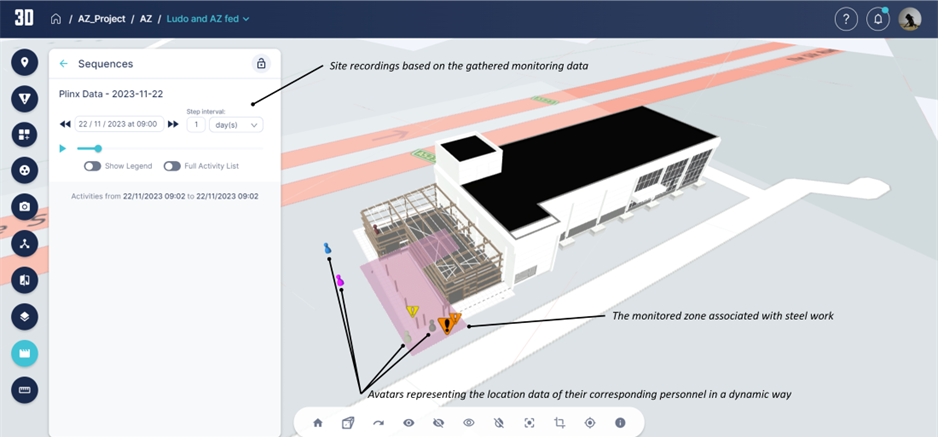
For the past two years, the Health and Safety Executive (HSE) has been working through the Discovering Safety programme with the construction industry, academia and tech providers to develop a library of standardised data and processes which can be incorporated into visualisation and modelling tools, such as BIM, to mitigate safety risks in construction.
As an extension of this project, a new trial was started to pioneer the use of sensors that can be physically attached to people and plant, and digitally link them to a BIM model to create safety zones.
The trial’s key outputs were to:
- showcase the viability of design of 4D safety zones, planned in advance of work starting, on a construction site during construction;
- demonstrate how the data collected by onsite sensors can be visualised and analysed in a BIM model via a playback scenario. Doing so can offer valuable insights to guide future decisions for site planners;
- provide a basis for enhancing safety standards and generating guidance and best practice for the construction sector, particularly by enhancing analysis of the hierarchy of controls;
- contribute to the body of knowledge within HSE about the effectiveness of digital tools in the construction sector; and
- contribute to enhancing health, safety, and productivity in construction practices by reducing delays and project costs resulting from onsite accidents.
The proof-of-concept work was trialled on a small scale and on a small site under controlled conditions. As such, it is difficult to infer a definitive change in site-wide performance. However, HSE believes that the potential benefits unlocked by the success of this trial are significant.
Proicere | Sellafield Product and Residue Store Retreatment Plant
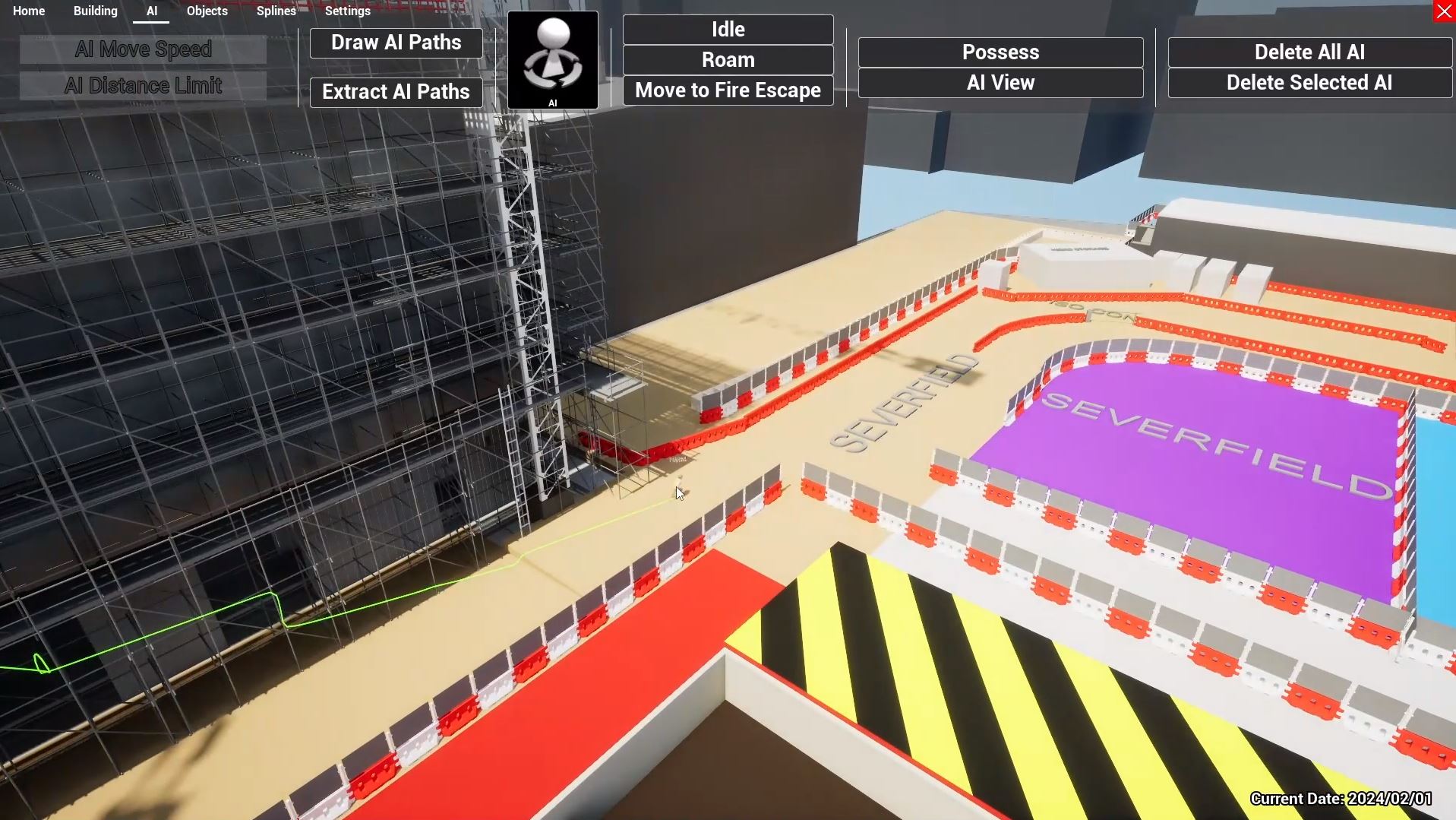
BIM consultancy Proicere worked with Morgan Sindall to create an entirely new approach to managing emergency escape routes on complex construction sites such as Sellafield Product and Residue Store Retreatment Plant.
To achieve this, Proicere integrated its advanced 4D planning and modelling software with bespoke gaming and AI programming.
Morgan Sindall required a site-specific solution to introduce regularly changing emergency exit plans within a bustling, evolving site environment. With Proicere’s 4D model of the working programme and site already in use by the project team, Proicere’s developers created an AI-based solution that could simulate site operations and possible complications that would block certain escape routes.
One of the biggest health and safety risks on major and complex construction projects such as Sellafield is the sometimes daily changing escape routes for workers on site – what may be the safest and quickest escape route one day, may become hazardous the following day once a different team is on site, or works move into a different area.
To overcome this challenge, Proicere’s software can computer-generate site workers who can be placed inside the application, with AI then navigating the fastest and safest escape route for that day, based on the wider programme of works being undertaken throughout the site.
With the application syncing with the daily site programme, Morgan Sindall’s project team was able to quickly check each day’s risks and changes to escape routes and provide accurate maps to each team specific to where on site they were working.
Celebrate with the best
The winners of the Digital Innovation in Health, Safety and Wellbeing, alongside the victors of the other 12 categories, will be revealed at the awards dinner on 2 July at the Brewery in London. You can join them by booking your places at the awards.
The Digital Construction Awards celebrate best practice and reward innovation in the application of information management and digital technology in the built environment sector.
The awards are run by Digital Construction Week, the Chartered Institute of Building (CIOB), and Construction Management and BIMplus. Awards sponsors include Bluebeam, Procore, Revizto and the CIOB.
Don’t miss out on BIM and digital construction news: sign up to receive the BIMplus newsletter.












